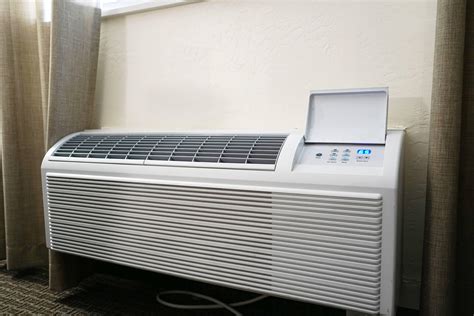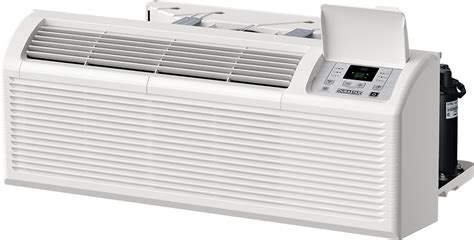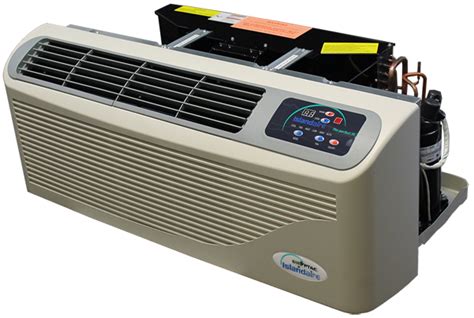The Packaged Terminal Air Conditioner (PTAC) is a type of self-contained heating and cooling unit commonly used in hotels, motels, and other commercial applications. Unlike traditional split-system air conditioners, PTACs are designed to be installed through a wall, providing a compact and efficient solution for climate control in individual rooms or spaces. With their ease of installation, low maintenance requirements, and ability to provide both heating and cooling, PTACs have become a popular choice for many businesses and organizations.
One of the primary advantages of PTACs is their ability to provide individualized climate control, allowing each room or space to be heated or cooled independently. This is particularly useful in hotels and motels, where guests may have different temperature preferences. Additionally, PTACs are often more energy-efficient than traditional HVAC systems, as they only heat or cool the specific area they are installed in, rather than an entire building. According to the U.S. Department of Energy, PTACs can achieve energy efficiency ratings of up to 12.1 EER (Energy Efficiency Ratio), making them a cost-effective option for many businesses.
Key Points
- PTACs are self-contained heating and cooling units designed for individual rooms or spaces
- They are commonly used in hotels, motels, and other commercial applications
- PTACs provide individualized climate control, allowing each room to be heated or cooled independently
- They are often more energy-efficient than traditional HVAC systems, with energy efficiency ratings of up to 12.1 EER
- PTACs are relatively low maintenance and easy to install, making them a popular choice for many businesses
How PTACs Work

PTACs work by using a combination of refrigeration and electric heating to provide both cooling and heating to a room or space. The unit is typically installed through a wall, with the evaporator coil and fan located on the inside and the condenser coil located on the outside. During the cooling cycle, the refrigerant flows through the evaporator coil, absorbing heat from the air and transferring it to the condenser coil, where it is released outside. In the heating cycle, the unit uses electric resistance heating to warm the air, which is then blown into the room or space.
The efficiency of a PTAC is measured by its Energy Efficiency Ratio (EER), which is calculated by dividing the unit's cooling capacity (in Btu/h) by its power consumption (in watts). The higher the EER, the more energy-efficient the unit is. For example, a PTAC with an EER of 12.1 can provide 12.1 Btu/h of cooling for every watt of power consumed. This makes PTACs an attractive option for businesses looking to reduce their energy costs and minimize their environmental impact.
Types of PTACs
There are several types of PTACs available, each with its own unique features and benefits. Some common types of PTACs include:
- Standard PTACs: These are the most common type of PTAC and are designed for general use in hotels, motels, and other commercial applications.
- Heat Pump PTACs: These units use a heat pump to provide both heating and cooling, and are often more energy-efficient than standard PTACs.
- PTACs with Electric Heat: These units use electric resistance heating to provide heat, and are often less expensive to purchase and install than heat pump PTACs.
- PTACs with Remote Monitoring: These units can be monitored and controlled remotely, making them a popular choice for large commercial applications.
| PTAC Type | EER Rating | Cooling Capacity (Btu/h) | Heating Capacity (Btu/h) |
|---|---|---|---|
| Standard PTAC | 10.5 | 7,000 | 3,500 |
| Heat Pump PTAC | 12.1 | 9,000 | 4,500 |
| PTAC with Electric Heat | 9.5 | 6,000 | 3,000 |

Maintenance and Repair of PTACs

Regular maintenance is essential to ensure the optimal performance and longevity of a PTAC. This includes tasks such as cleaning the air filter, checking the refrigerant level, and inspecting the unit’s electrical connections. Additionally, it is recommended to have a professional inspect and maintain the unit on a regular basis to identify and address any potential issues before they become major problems.
Some common issues that can arise with PTACs include refrigerant leaks, faulty thermostats, and clogged air filters. In the event of a refrigerant leak, it is essential to have the unit repaired by a qualified technician as soon as possible to prevent damage to the unit and minimize the risk of environmental harm. Similarly, a faulty thermostat can cause the unit to malfunction, leading to inconsistent temperatures and increased energy consumption.
Troubleshooting Common Issues
When troubleshooting common issues with a PTAC, it is essential to follow a logical and methodical approach. This includes:
- Checking the air filter and cleaning or replacing it as needed
- Verifying the unit’s electrical connections and ensuring they are secure
- Inspecting the refrigerant level and checking for any signs of leaks
- Testing the thermostat and ensuring it is functioning correctly
What is the average lifespan of a PTAC?
+The average lifespan of a PTAC is around 10-15 years, depending on usage and maintenance. However, with proper care and maintenance, some units can last up to 20 years or more.
How often should I clean the air filter on my PTAC?
+It is recommended to clean the air filter on your PTAC every 1-3 months, depending on usage and environmental conditions. A dirty air filter can reduce the unit’s efficiency and increase energy consumption.
Can I install a PTAC myself, or do I need to hire a professional?
+While it is possible to install a PTAC yourself, it is highly recommended to hire a professional to ensure the unit is installed correctly and safely. Improper installation can lead to reduced efficiency, increased energy consumption, and even safety hazards.



